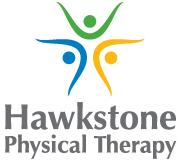FAQ
Q: What is physical therapy, or physiotherapy?
Physical therapy, also sometimes called physiotherapy, is a physical medicine and rehabilitation specialty that focuses on the proper movement and physical function of the human body. Physical therapists assess, diagnose and treat a wide variety of conditions caused by injury, aging, disability, or other medical conditions.
Q: How can physical therapy help me?
While every body and every condition is different, physical therapy can help you relieve pain, recover from injury and get your body moving properly again. Hawkstone physical therapists are highly educated professionals with an expert understanding of how the bones, muscles, joints of the human body work. They’ll gently and expertly guide you through the process of rehabilitation.
Q: Do I need to be referred by a doctor?
You do not need a referral from a doctor to seek help from a physical therapist. The only time you may need a referral from a physician is if you are submitting your payment receipts to a health plan provider for reimbursement. Be sure to check your health plan first to see if you need to be referred for physical therapy. If not, we hope to see you sooner!
Q: What should I expect the first time I visit?
When you come to Hawkstone Physical Therapy for the first time, you can expect to be listened to and taken care of. Your physical therapist will begin by sitting down and talking with you about why you’re there and make sure they understand your needs.
They’ll want to know:
- Where are you having the problem?
- When did it start?
- How is it affecting your daily life?
- Has this type of problem occurred in the past?
- Are you taking any medications?
Your physical therapist will then assess your condition.
They’ll examine your posture, joint range of motion, muscle and ligament strength. They may also watch you walk and see how well you balance. Then your therapist will talk with you to make sure you understand your condition.
Then it’s time to start the road to your recovery with your first treatment.
Of course, the type of treatment you receive will depend on the results of your assessment. Your physical therapist will go over your treatment plan and then perform your first treatment. After your treatment ends, you may be given some exercises to do at home.
Q: What’s the difference between acupuncture and IMS?
Acupuncture and Intramuscular Simulation (IMS) both use thin, stainless steel needles. With acupuncture, these needles are inserted into specific points on the body that have been mapped out by traditional Chinese medicine. When IMS is used, the needles are inserted directly into the muscle. Where the IMS needle is placed is determined by the physical therapist during their assessment, and not according to a predetermined map, or chart, as with acupuncture.
